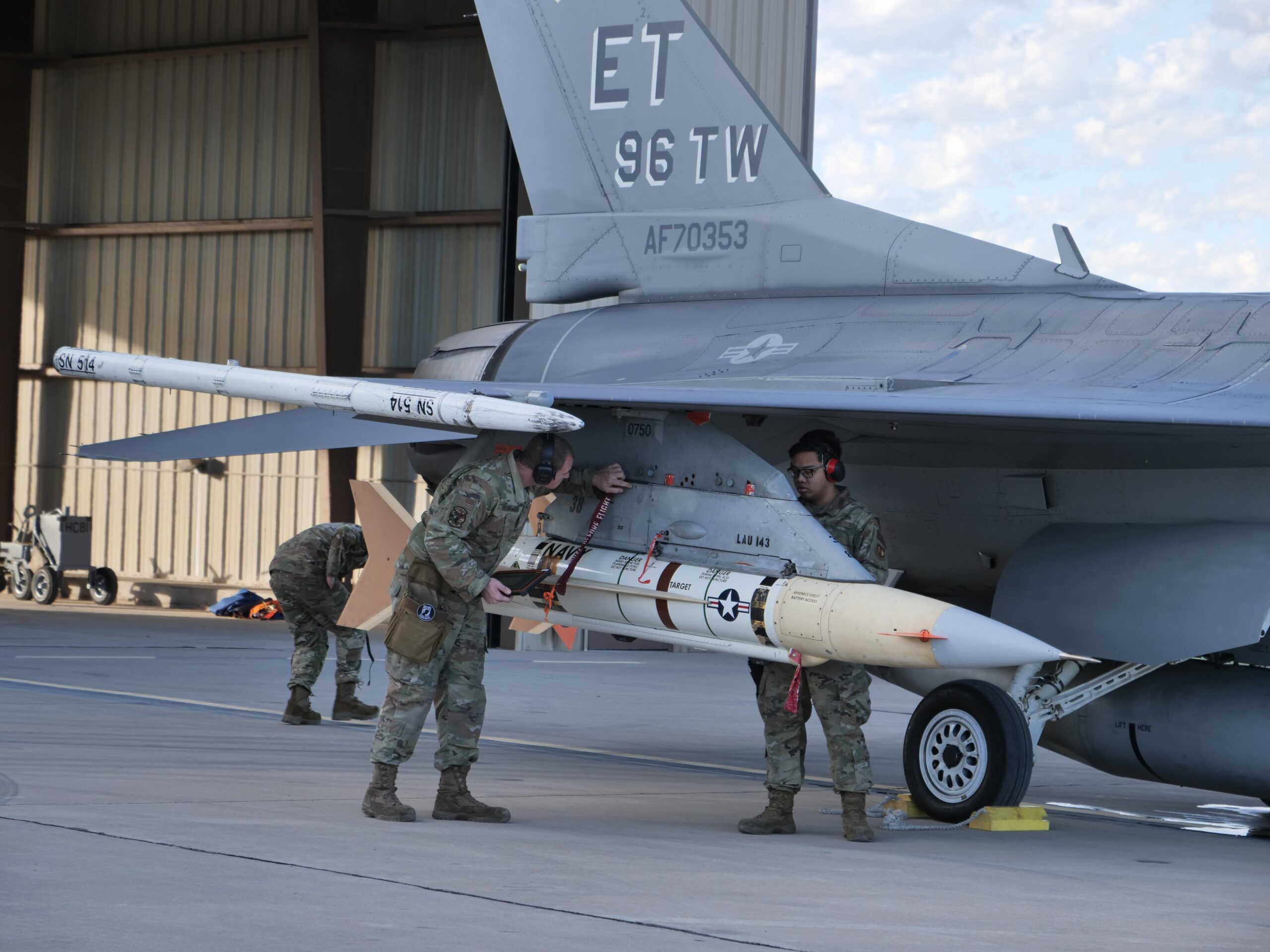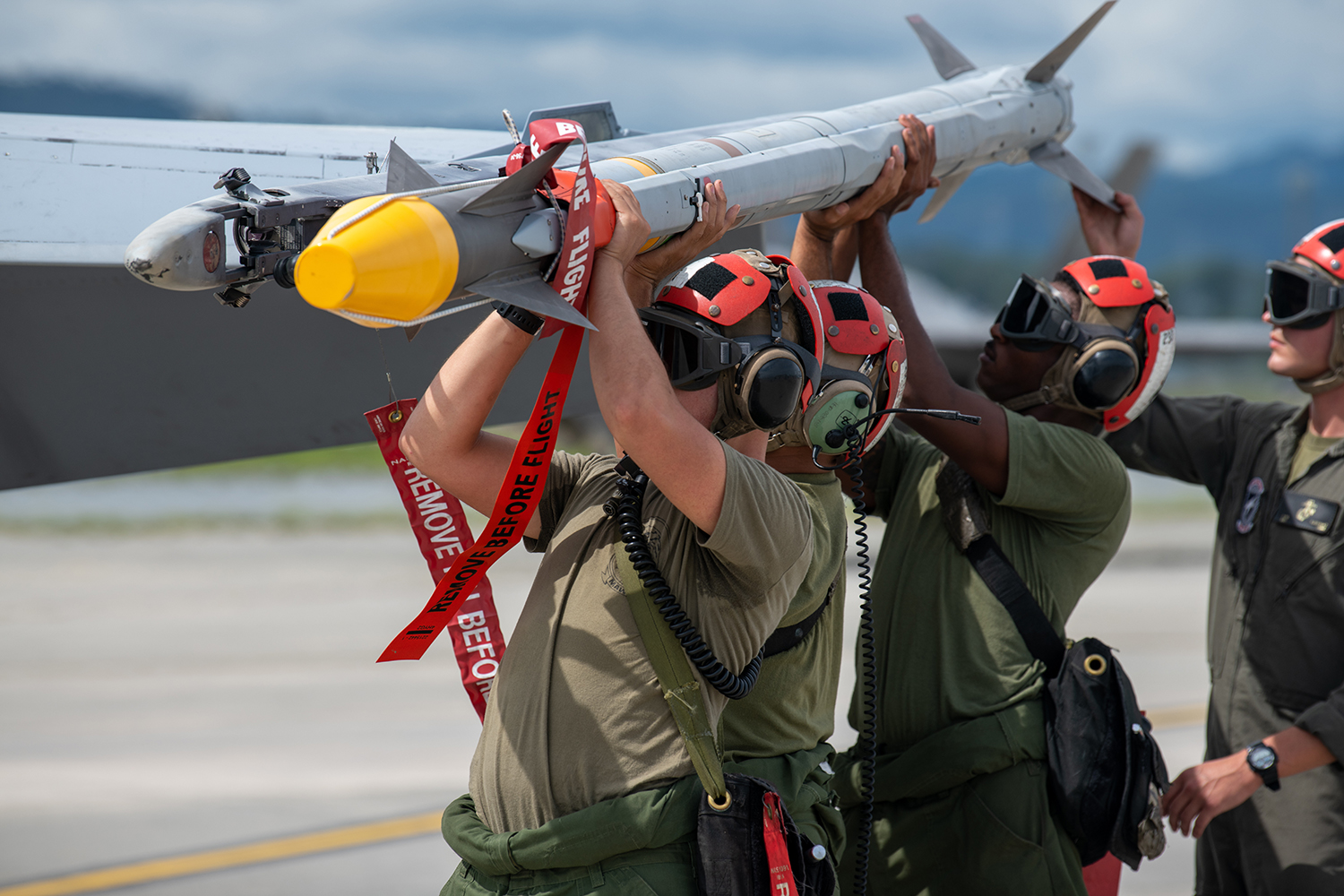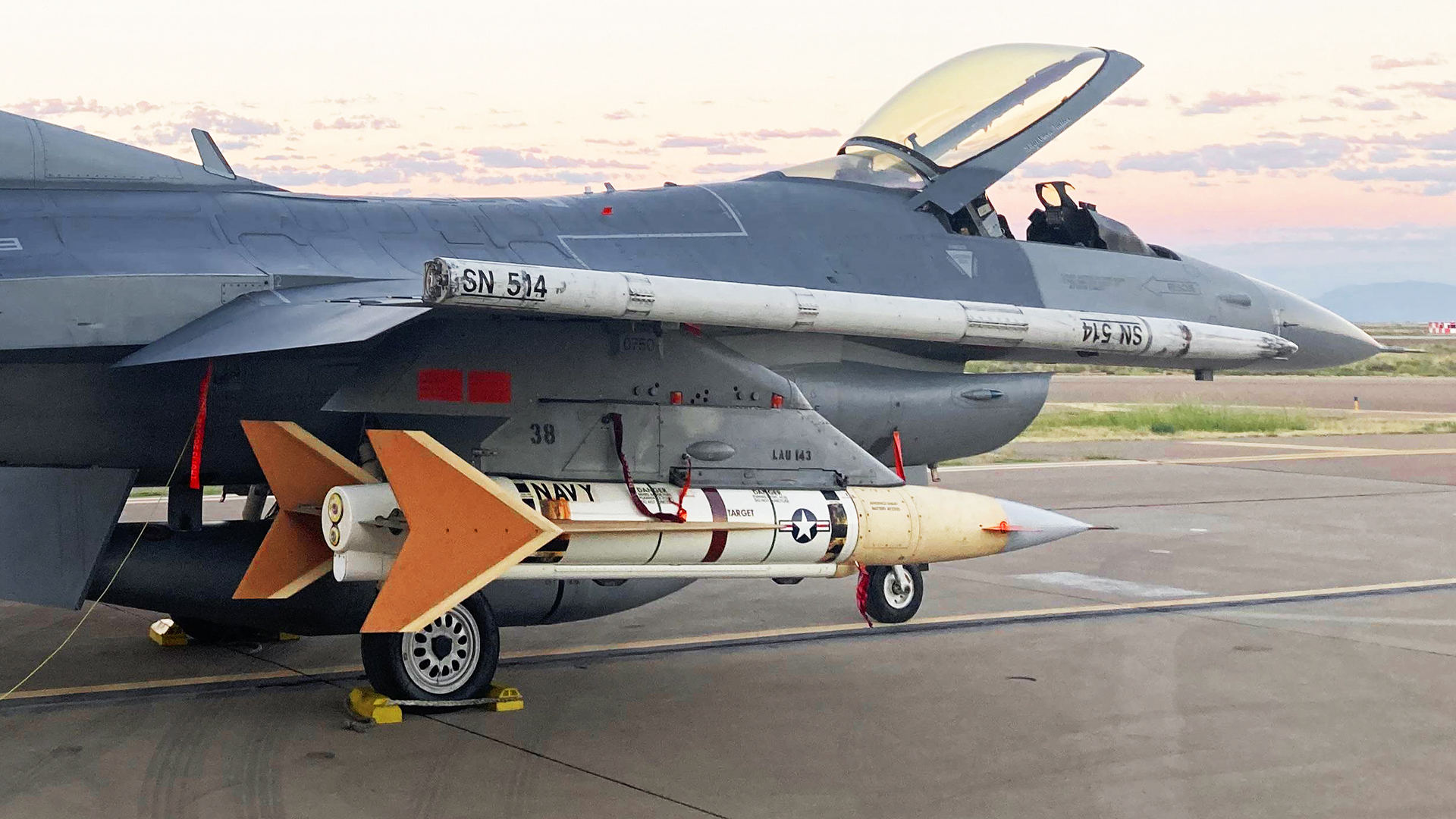The U.S. Navy has announced that the final two AQM-37 threat replication target drones (also referred to by the nickname Jayhawk and more recently, Typhon) have been launched, bringing to a close the drone’s six-decade-long career. The targets have served the U.S. military in various training and system development operations across the globe over the years, and the Navy has now confirmed that it employed some of the last of these systems in support of this year’s Gray Flag exercise. The War Zone had previously reported specifically on the interesting inclusion of the F-16-carried AQM-37 in this major test and training event.
According to the Navy, the last two remaining AQM-37 targets, which are air-launched pre-programmed supersonic drones intended for cruise and ballistic missile, as well as high-speed aircraft threat replication, were fired from a U.S. Air Force F-16 Viper on September 22. They were launched in support of the U.S. Army’s Integrated Fires Mission Command (IFMC) operations at White Sands Missile Range, New Mexico. The IFMC was stood up to provide integrated fire control for the Army’s missile defense architectures with the goal of integrating sensors and weapons into a more all-encompassing ecosystem. The organization is also responsible for developing and improving mission command components and software as well as the sustainment of already fielded systems.

“The final launch of the AQM-37 represents the closing of a chapter for the Aerial Targets Program Office (PMA-208) and our industry partners, but also intensifies our focus and provides us the opportunity to start and sustain new chapters with more advanced technology and capabilities that more closely resemble the threats we face,” said Don Blottenberger, PMA-208 program manager.
In what has now proven to be among one of the last instances where an AQM-37 was employed, the Air Force’s 412th Test Wing in mid-September launched seven targets from Edwards AFB-based F-16s to support testing of E-2D Advanced Hawkeye and F-35 Lightning II capabilities for the Navy’s Gray Flag exercise at Point Mugu Sea Range in California. The Navy didn’t reveal exactly how AQM-37 was used in this scenario, but the Gray Flag exercise as a whole is generally described as a test and evaluation exercise that incorporates various advanced systems and capabilities. The War Zone has reached out to the Naval Air Systems Command for additional information but has yet to hear back

Throughout its very long time in service, the AQM-37 was especially instrumental in the testing and development of various missiles, including the AIM-9 Sidewinder, RIM-7 Sea Sparrow Missile, as well as various surface-to-air missile and air-surveillance radar systems. The target system later helped ships equipped with the AEGIS missile defense systems better calibrate their radar and missile launching elements, as well as train their crews. The type has served multiple services and international allies with a huge range of test and training missions.

“Our supersonic technical team has done fantastic work over the last several years to get the final targets launched and put to use in a way that supports development and testing for our military,” Blottenberger said. “The team saved the Navy close to $1 million by avoiding demilitarization of the last several targets by using them for the Navy Gray Flag Exercise and other test and evaluation events.”
The AQM-37 came in multiple variants, the first being the AQM-37A, which was developed by Beechcraft in partnership with the Navy beginning in the late 1950s. Shortly after, the team unveiled its first prototype in 1962, and the inaugural AQM-37A target drone officially entered operational service with the Navy the following year and then with the Air Force in 1967.

The Navy and Beechcraft later collaborated on an improved version in 1981 known as the AQM-37C Extended Performance. In 1996, Raytheon took over and began manufacturing the AGM-37D, which is the series’ youngest variant, and it took its first flight in 1997. You can read more about the AQM-37’s history in this past War Zone report.
The Navy noted that from 1962, when the first AQM-37A prototype was revealed, to September 22 of this year, over 5,000 AQM-37 targets had been delivered and launched in support of the service’s shoot-down training and technology development efforts. This is achieved through the system’s primary ability to replicate air-to-air threats, but the AQM-37A also offered secondary roles as an air-to-surface target as well as a ballistic missile surrogate, with the ability to reach altitudes of up to 300,000 feet.


The AQM-37’s specifications have varied slightly between different models over the years. In terms of performance, details about AQM-37D are sparse, but it likely behaved similarly to its extended-range predecessor, which was non-recoverable and could fly at a speed of Mach 4 and reach a flight ceiling of 100,000 feet when not programmed for a ballistic missile trajectory.
As far as an AQM-37 replacement is concerned, it’s unclear what that is exactly, although it’s most likely that a handful of different target drone types will fill any gaps left by AQM-37 — and they likely already do. One major player would be Northrop Grumman’s GQM-163 Coyote, which is designed primarily as a non-recoverable sea-skimming supersonic target largely meant to simulate anti-ship cruise missiles but can also perform as a diving target with a maximum altitude of 52,000 feet. Coyote can cruise at a speed of Mach 2.8 for sea-skimming missions and Mach 3.8 for diver missions. However, it is important to note that this system is surface-launched with a Hercules MK 70 rocket booster as opposed to the air-launched AQM-37.

The Navy recently awarded Northrop Grumman a contract to procure 28 more of these systems, which would line up with the retirement of the AQM-37 timeline-wise, but it doesn’t change the fact that the Coyote isn’t quite as versatile of a system. Although, there does appear to be AQM-37 DNA in the Coyote, as the first GQM-163A variant reportedly adopted the target’s flight control avionics and front-end structure elements to save costs.

Regardless of what will succeed the AQM-37, the target drone served a long and influential career across all branches of the U.S. military and helped developed some of the most iconic modern weapon systems.
“The legacy of the AQM-37 and those who were involved in its development and sustainment through the decades will not be forgotten,” said Blottenberger. “Its 60-year lifespan is a testament to its capability, reliability, and the critical role it has played in the security and preparedness of both our own and our international partners’ armed forces.”
Update 4:45 PM EST Oct. 27
The Naval Air Systems Command (NAVAIR) has gotten back to The War Zone about the AQM-37’s potential replacement. As expected, Coyote is a part of the solution. NAVAIR’s responses read as follows:
“There currently is no direct replacement for the AQM-37 and all other variants of the AQM-37 have also been expended.”
NAVAIR added that while remaining U.S. Navy supersonic targets like GQM-163A do not replicate the same performance as the AQM-37, “they are capable of fulfilling a separate limited subset of its capability.” Between the remaining supersonic targets, NAVAIR said there currently is not an anticipated gap in fleet training.
As for Gray Flag, NAVAIR explained that “the annual Gray Flag brings together units from the testing community from the various services. Targets were successfully launched from F-16s and provided various Type/Model/Series of aircraft the opportunity to test radars and shoot missiles at these supersonic targets.”
Contact the author: Emma@thewarzone.com
